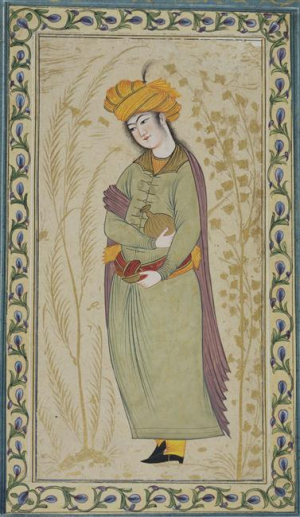(Boylove Documentary Sourcebook) - The Medieval Persian Sufi Ritual Practice of "Shāhid-Bāzī", the Mystical Contemplation of Handsome Beardless Youths, as Featured in a Short Story from 'The Abode of Spring' by Jāmi of Herāt

From The Behâristân (Abode of Spring): A Literal Translation from the Persian (بهارستان Bǎhārestān, 1487) by Jâmi, anonymously translated by Edward Rehatsek, anonymously edited by Richard Francis Burton (Benares [actually Stoke Newington, England]: Printed by the Kama Shastra Society for Private Subscribers only, 1887). Footnotes omitted.
Note: The term shāhid-bāzī means literally "witness play", referring to the contemplation of supernatural beauty in earthly forms, but also has the sense of "love of boys".[1][2]
A handsome youth was by the lasso of desire attracted to a ring of Darwêshes, and he reposed like a centre in the circle of Sûfis.
He became a reflection of the Qiblah. Those who seek God
Turned their countenances from God towards him.
Those who wear the habit of religion, crowded
Around the sweet-spoken boy like flies around sugar.
Every one desired to possess him all to himself, and tried to make himself agreeable to him, so that at last this rivalry produced dissension among them, and they quarrelled:—
Amorous fellows are prone to fall out with each other
When all of them avow their love to one mistress.
When ardor excites those who go round the K‘abah
It is likely that they will clash against each other.
The superior of the monastery, whose cap was made of the same felt, and whose analogous pretensions bore every moment witness against him, called the boy and advised him, saying:—“O beloved son, and amiable youth; do not commingle with every one, like milk and sugar, and do not fall into the deceitful snares of every wretch. Thou art the God-showing mirror, and it would be a pity to be familiar with every heedless fellow.”
Do not every moment put thyself in the power of strangers,
Admit not general acquaintances to thy special intimacy.
Thy face is a mirror, which has been polished,
Do not allow rust to settle upon the bright mirror.
When the sweet boy had heard this advice, he became displeased, made a wry face, rose, and left the monastery on some pretext. He did not return for some days and the Murids were extremely grieved at his departure, so that in their lamentations they bored with the diamonds of their eye-lashes the jewels of weakness and misery, apologising as follows:—
Return, no one has power over thee, O boy.
Sit with whom thou choosest, and neglect whom thou wilt.
Although thou deceivest the intellect and art a foe to religion
Return, because thou art a consolation to a broken heart,
It is unfortunate, distressing, and miserable for us
To know thee sitting with others as an uninvited guest.
That youth accepted their excuses, abandoned his coldness and returned to the society of those whom he had abandoned, and who had been pained by his absence.
After four things, the hope of four others
Is better, such as repose and mercy after punishment,
Union after separation, fidelity after falsehood,
Peace after quarrelling, and reconciliation after blame.

References
- ↑ Jim Wafer, "Vision and Passion: The Symbolism of Male Love in Islamic Mystical Literature"; Stephen O. Murray and Will Roscoe, eds., Islamic Homosexualities: Culture, History, and Literature (New York; London: New York University Press, 1997), p. 117.
- ↑ Richard Todd, The Sufi Doctrine of Man: Ṣadr al-Dīn al-Qūnawī's Metaphysical Anthropology (Leiden, Netherlands; Boston: Brill, 2014) p. 16.
See also
- Adult friend (dictionary)
- Age of attraction (dictionary)
- Boylove
- Ephebophilia
- Ghilman
- Loved boy (dictionary)
- Minor-attracted person (dictionary)
- Pedophilia
- Young friend (dictionary)